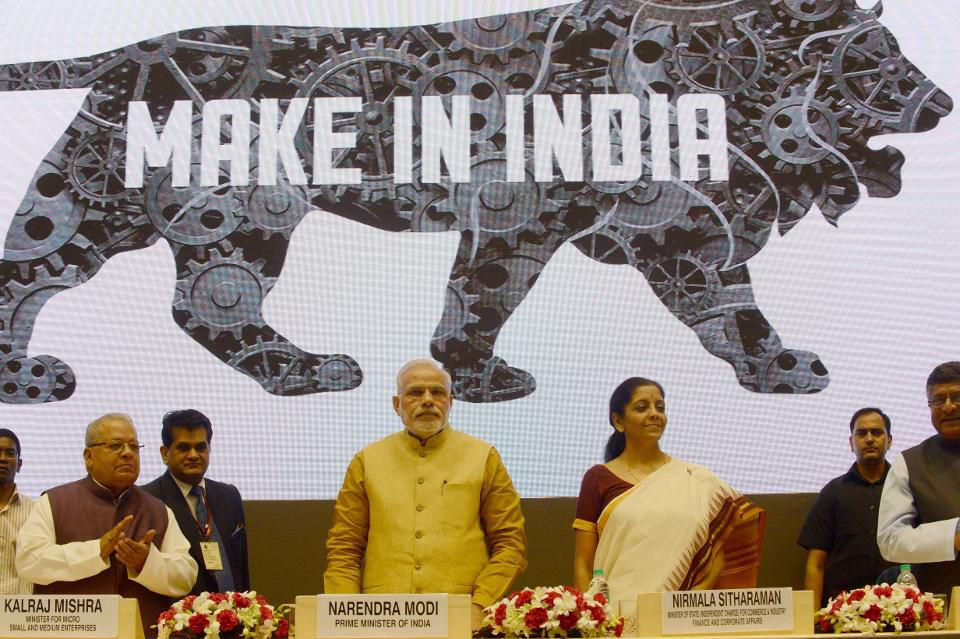The Make in India Dream: A defence perspective
- singhchauhanshivan
- Jul 27, 2020
- 3 min read
"Zero Defect Zero Effect", the motto of the Make in India week back in 2016 when PM Modi spoke at the event on 13th February 2016 which was attended by over 2500 international and 8000 domestic multi sectoral industries, foreign government delegations from 68 countries and business teams from 72 countries. The bright dream of the ast received a renewed focus as indigenisation again took prime focus with sustained outrage against external goods brought about by the Galwan valley incident. The defence situation however is a different playing field altogether.

In picture: PM Modi at the Make in India Summit
India’s defence industrial situation today is unique. It has the world’s fifth-largest defence budget at over ₹4 lakh crore or approximately $60 billion, about 25% of which is allocated to capital expenditure. India also has a very large defence industrial establishment with a long history of defence production. This includes 52 labs belonging to the Defence Research and Development Organisation (DRDO), nine Defence Public Sector Units (DPSUs), and 41 ordnance factories under the Ordnance Factory Board involved in lower-technology defence production.
The relative successes of other fields have not translated to the defence industry for a number of reasons which can all broadly be attributed to the fact that the economics of the defence industry do not follow the normal rules of economics. This is due to a number of factors: First, it is difficult and in some cases impossible to manufacture armaments in large enough numbers to benefit from economies of scale (barring certain equipment for the infantry). Major platforms are acquired in the dozens, sometimes hundreds, and almost never the thousands and even with India’s massive defence budget, the acquisition is likely to be incredibly taxing to said budget. Second, the defence sector is a monopoly ie. there is only one buyer: the Indian armed services. This leads to further market distortions. Third, because of the first two considerations, there are frequently monopolies in the defence sector: often, sole suppliers of a particular product. New entrants are inhibited by very high capital costs, carefully-guarded intellectual property, and the uncertainty of the procurement
process. Fourth, defence technologies, even when owned by private corporate entities, are subject to immense regulation by national governments on national security grounds. Finally, there is a significant difference between the economics of lower-technology weaponry and high-technology systems. In the absence of sufficient design and technical skills, the costs of independently developing the latter are higher by orders of magnitude.
As a result of these factors, private actors who are already significantly regulated in India in status quo are unlikely to ever enter into the defence industry as anything more than manufacturers rather than the roles of innovators or developers as taken up in countries with more robust defence infrastructure such as the USA or Russia.
India has been on a quest for defence industrial self-reliance almost since independence. The licensed production of Western and Soviet defence platforms began in the 1950s: by 1957, India was producing jet engines, and by the 1960s, it had embarked upon the manufacturing of an indigenously-designed combat aircraft, a jet trainer, a self-loading rifle, and field artillery radars, all with technological assistance from over 10 countries belonging to the Western and Eastern blocs. Despite these apparent early mover advantages and clear objectives, India’s ability to equip its own the military remains woeful. India is the second-largest importer of defence equipment in the world over the past five years, behind only Saudi Arabia; it imports about twice as much as China. It is dependent on foreign suppliers for most major weapon platforms, particularly at the higher technological levels: combat, transport, and reconnaissance aircraft; frigates and attack submarines; howitzers and anti-aircraft systems; etc. It’s lack of exports coupled with high degree of imports makes the idea of 70% indigenisation as set in 1972 seem far fetched, with estimates placing current standards at about 36%.

In picture: The Arjun Mk-2 at the Republic day parade
Regardless of the many challenges, India has had some recent successes in defence production with the Arjun Mk-2 or Mk-1A is a third generation MBT (Main Battle Tank) that shows incredible promise as a supplement if not an outright replacement to the Russian T-72s and T-80s in active service. Niggling problems associated with any new system make for a slow change however, with the Arjun unlikely to replace the T-90s or remove Russian manufactured armored vehicles from usage for considerable time to come.

In picture: The HAL Tejas
The relative successes in the HAL Tejas which is a single seater all purpose fighter, the Pinaka multiple rocket launcher, the Nag anti-tank missile and the Akash SAM (Surface to Air Missile) are all steps in the right direction but it remains to be seen whether India can actually forge a path as a defence manufacturer in its own right. The dream of 70% indigenous production is likely to be completed by a far more realistic 2030 rather than the originally stated 2011.


















Comments